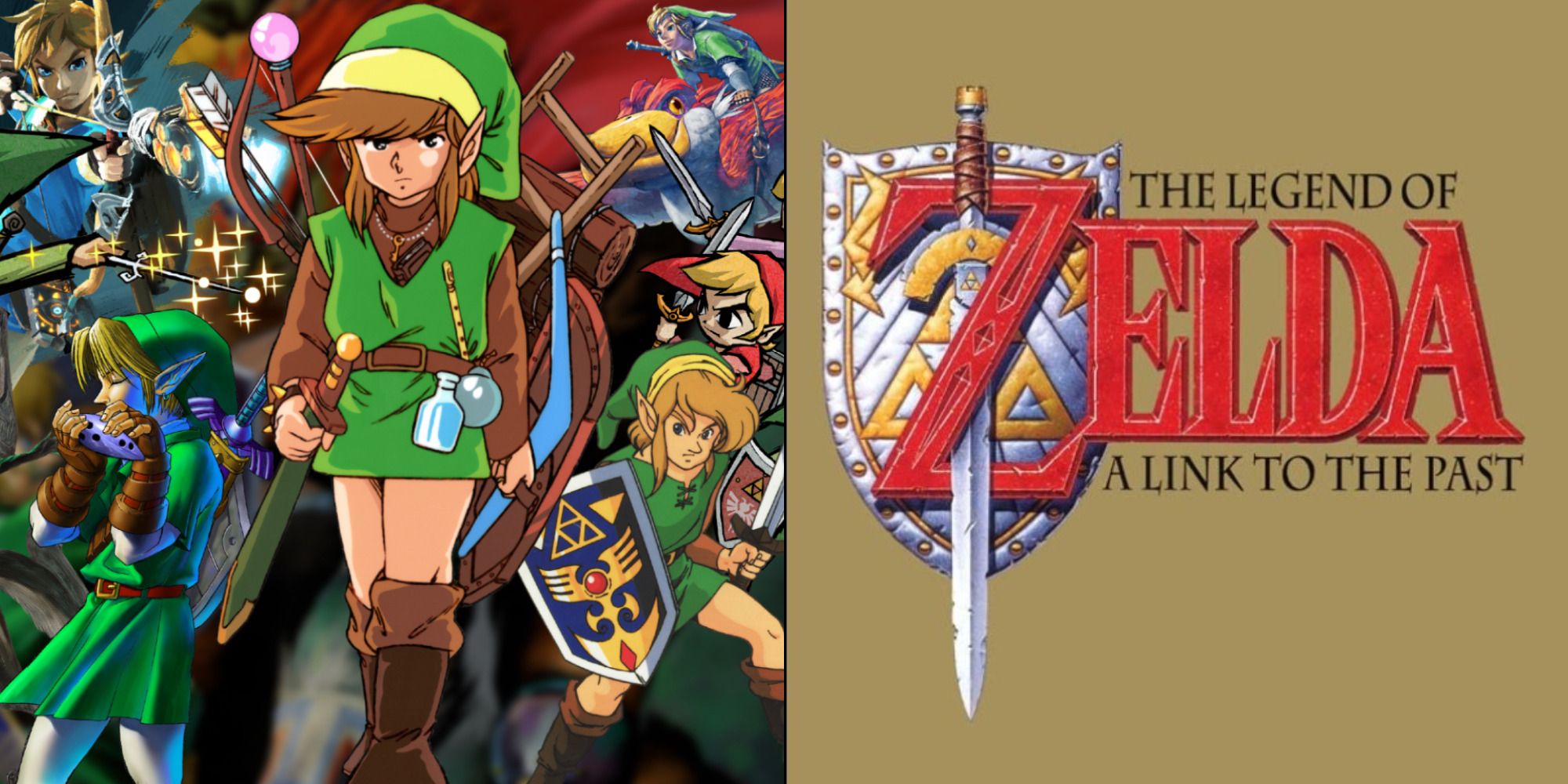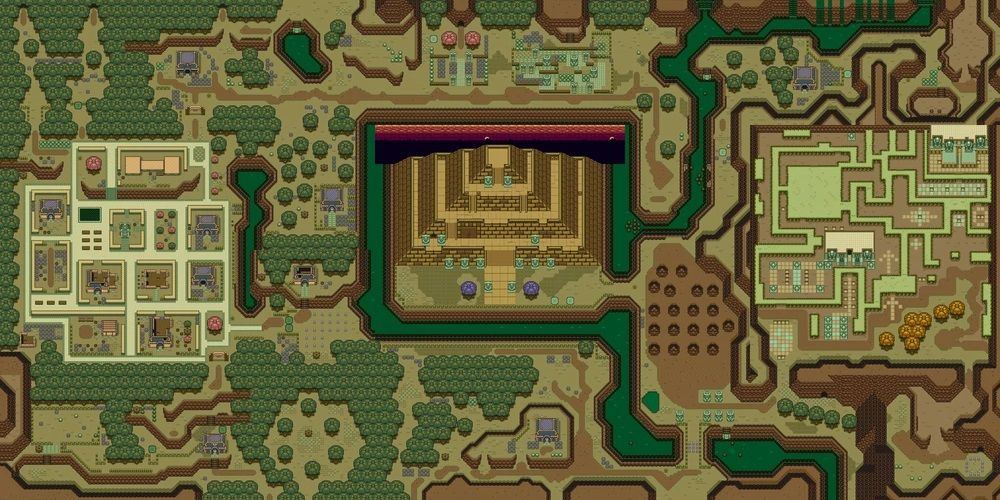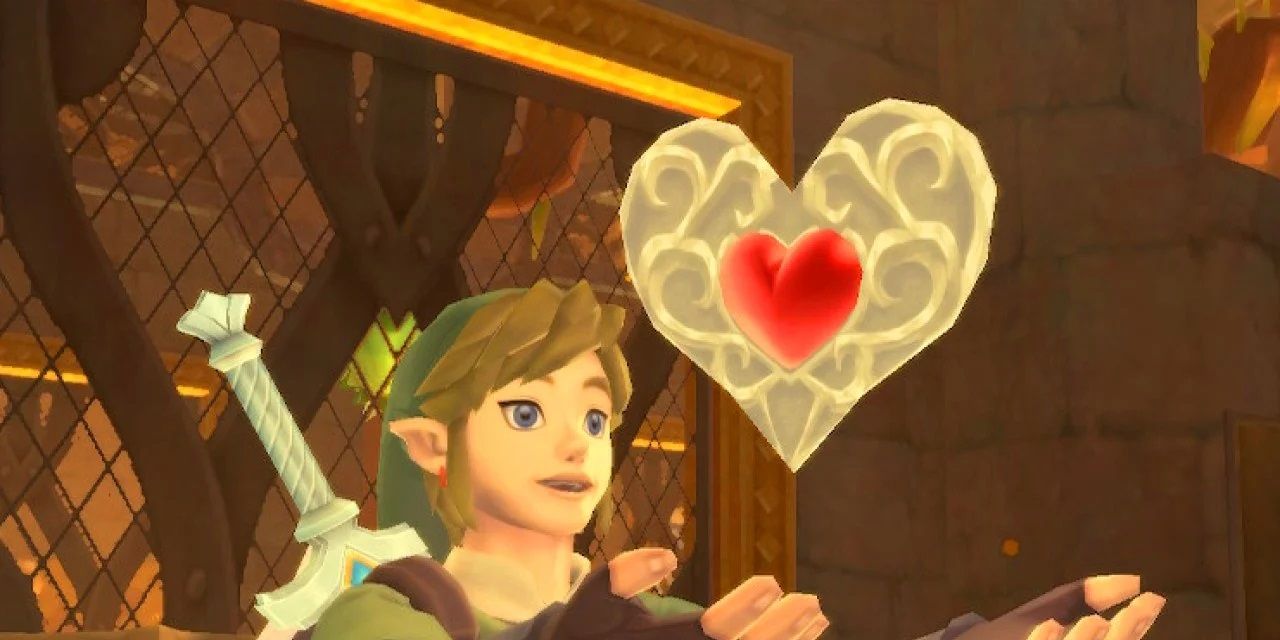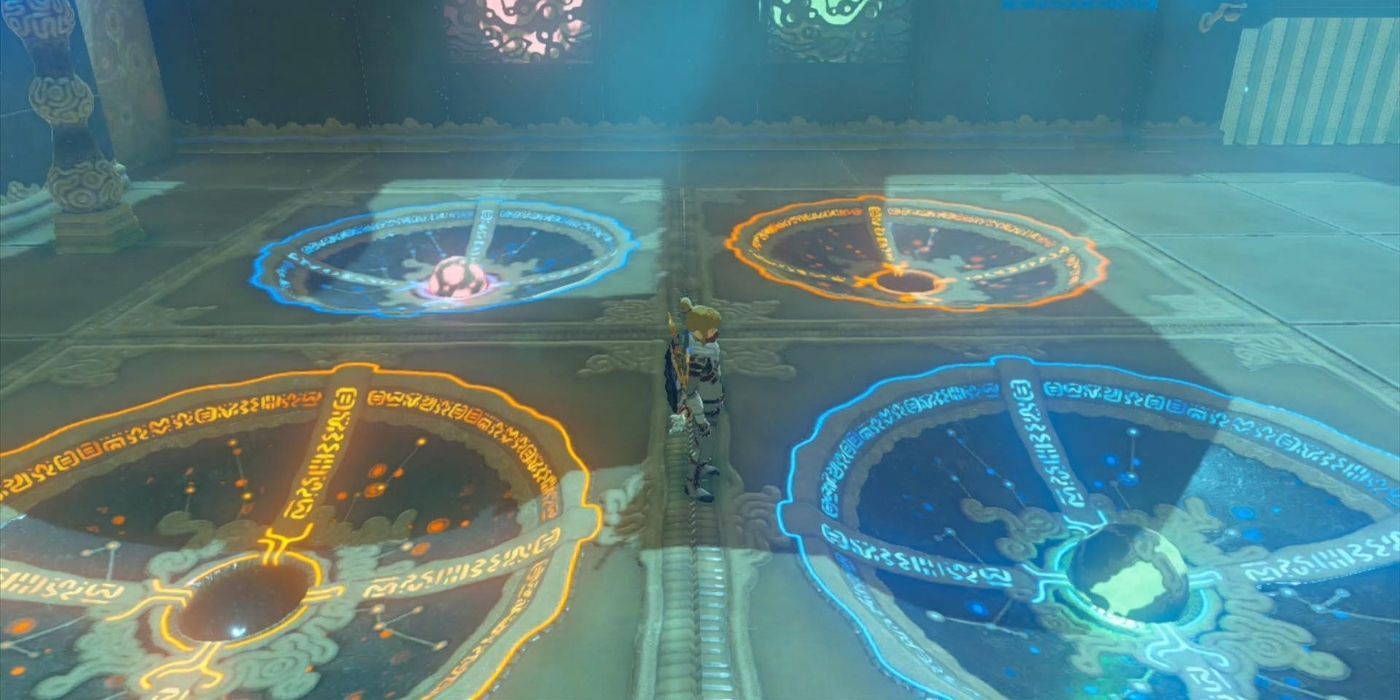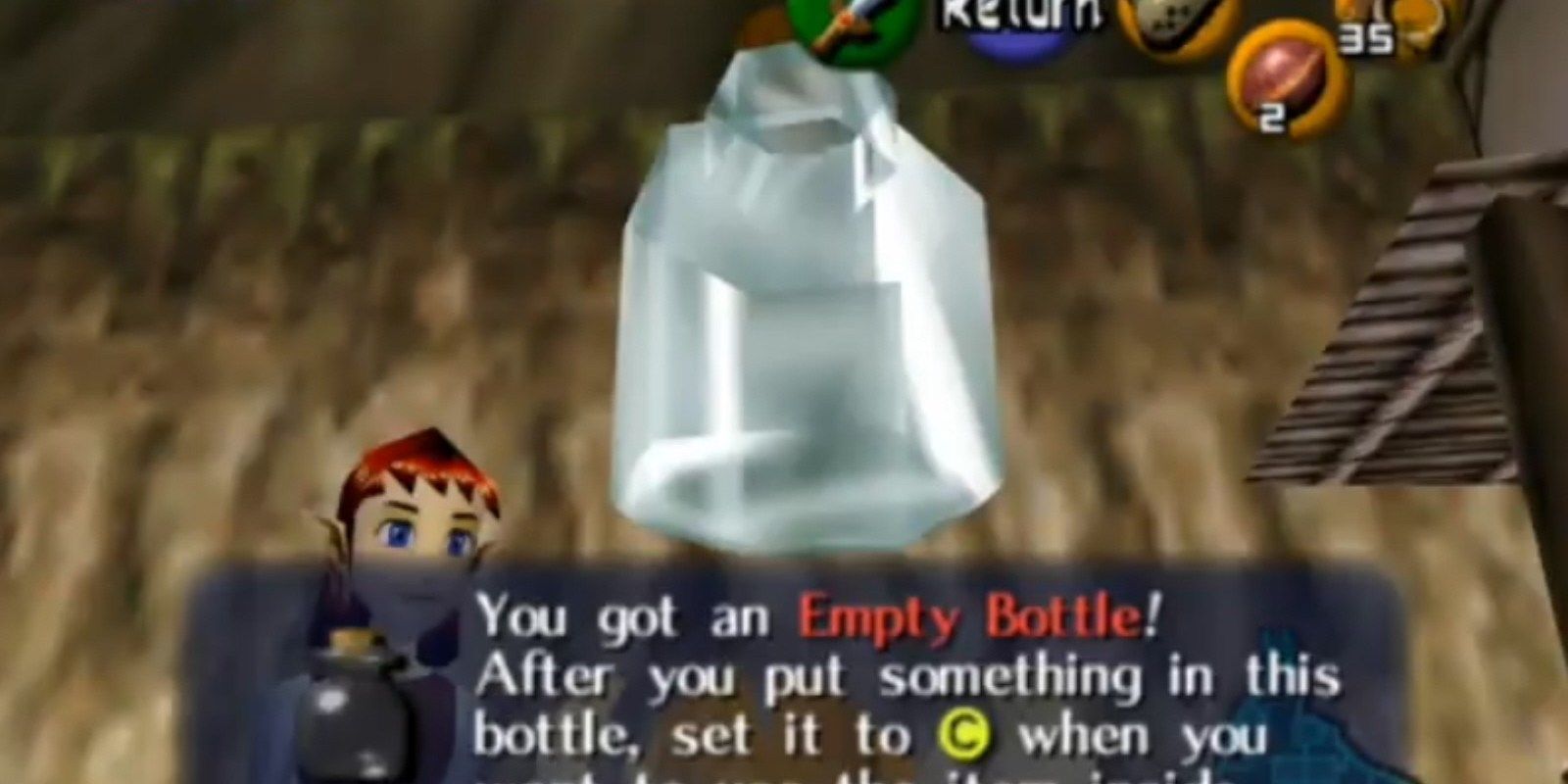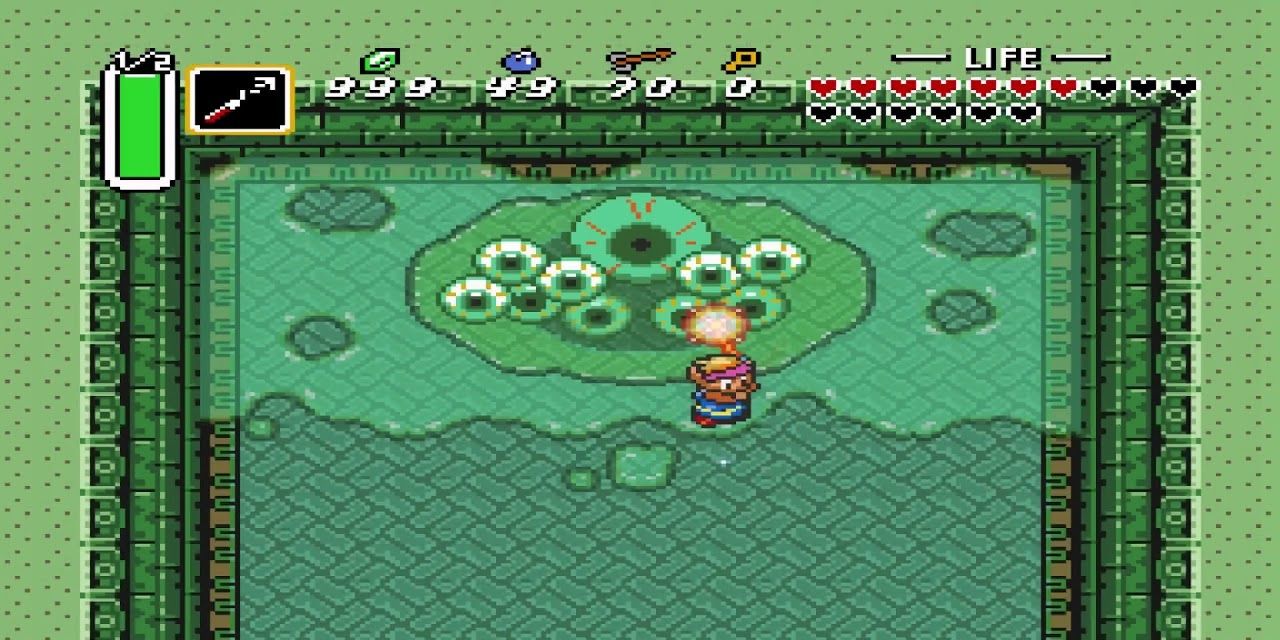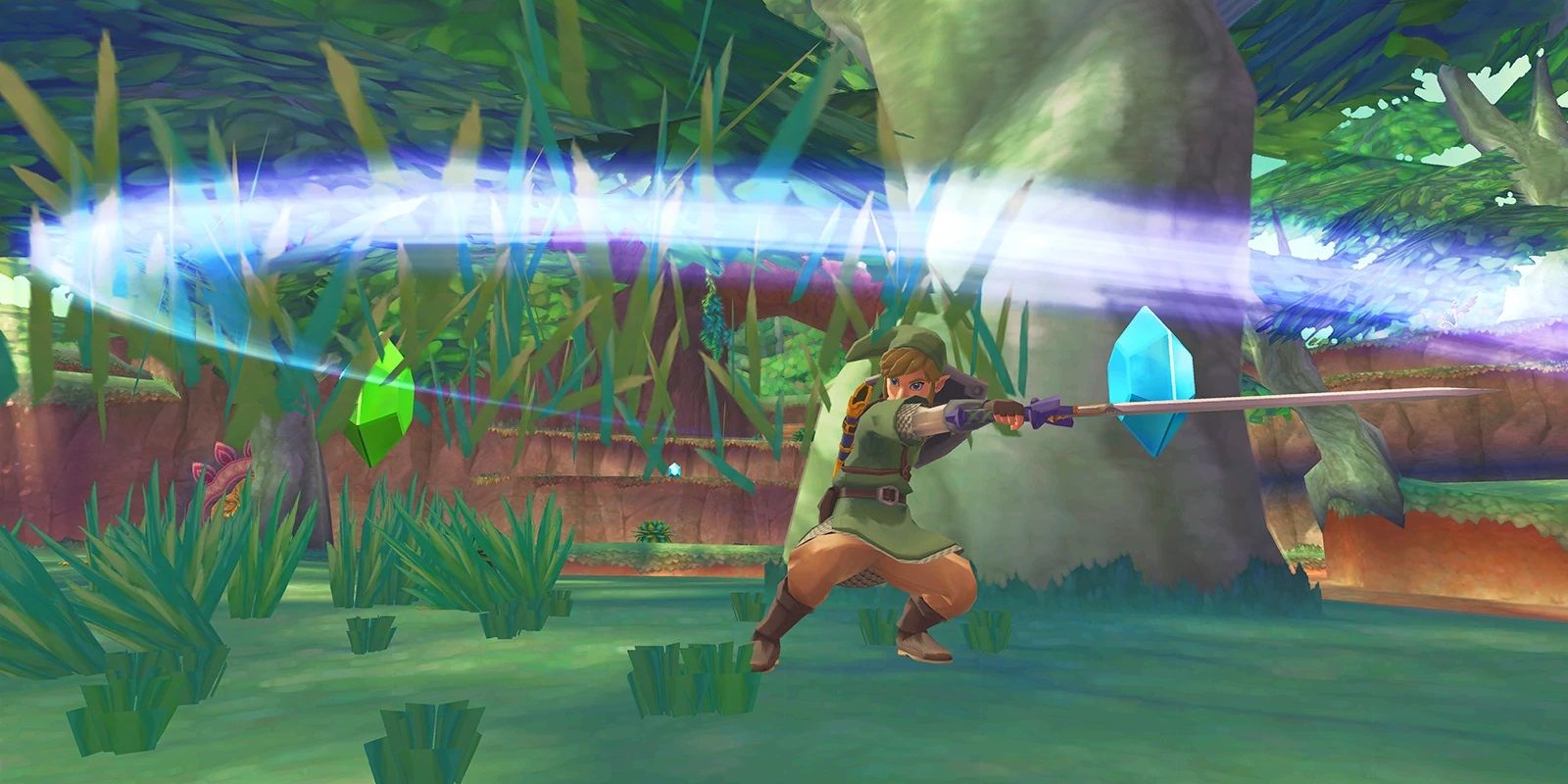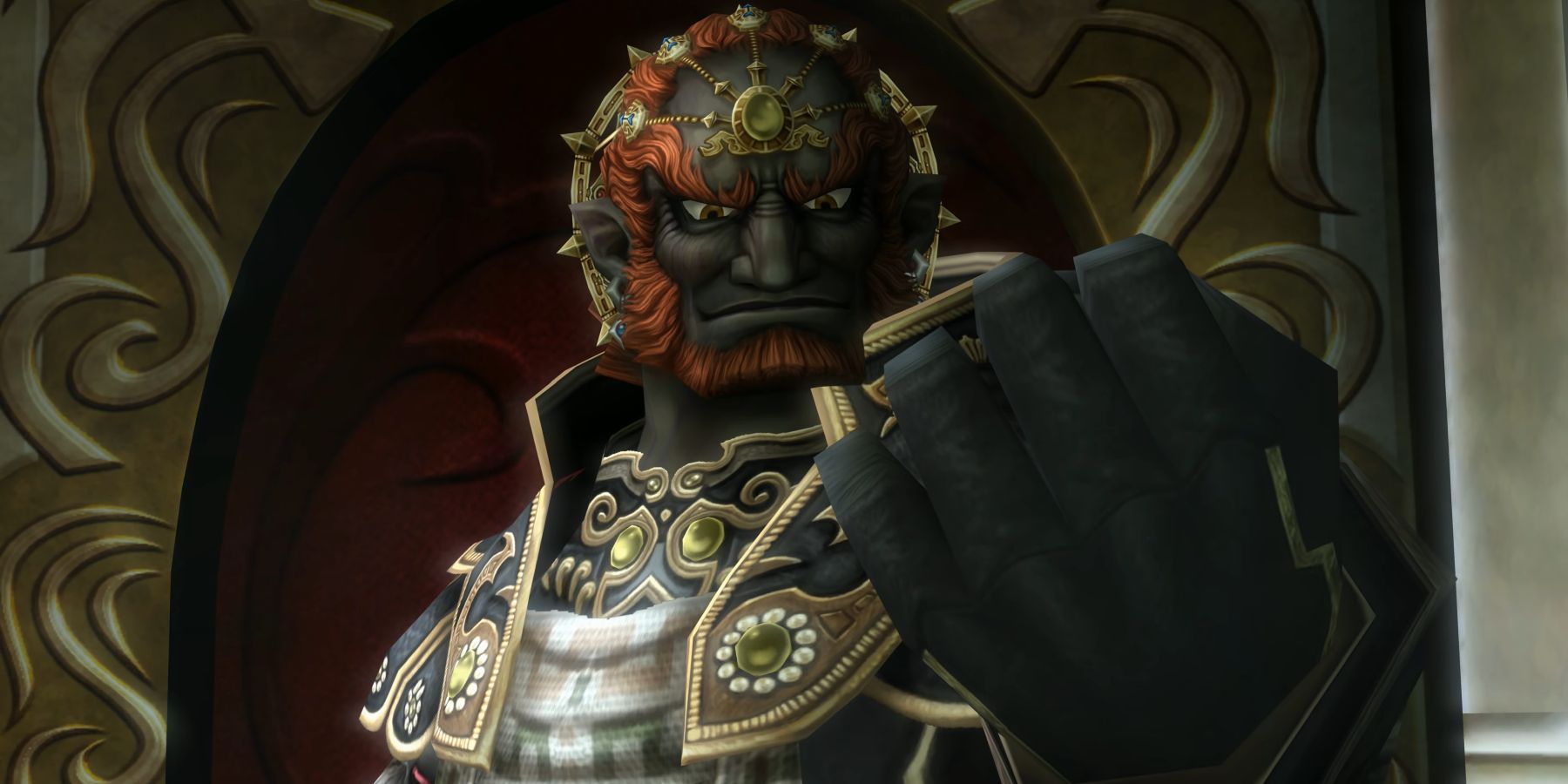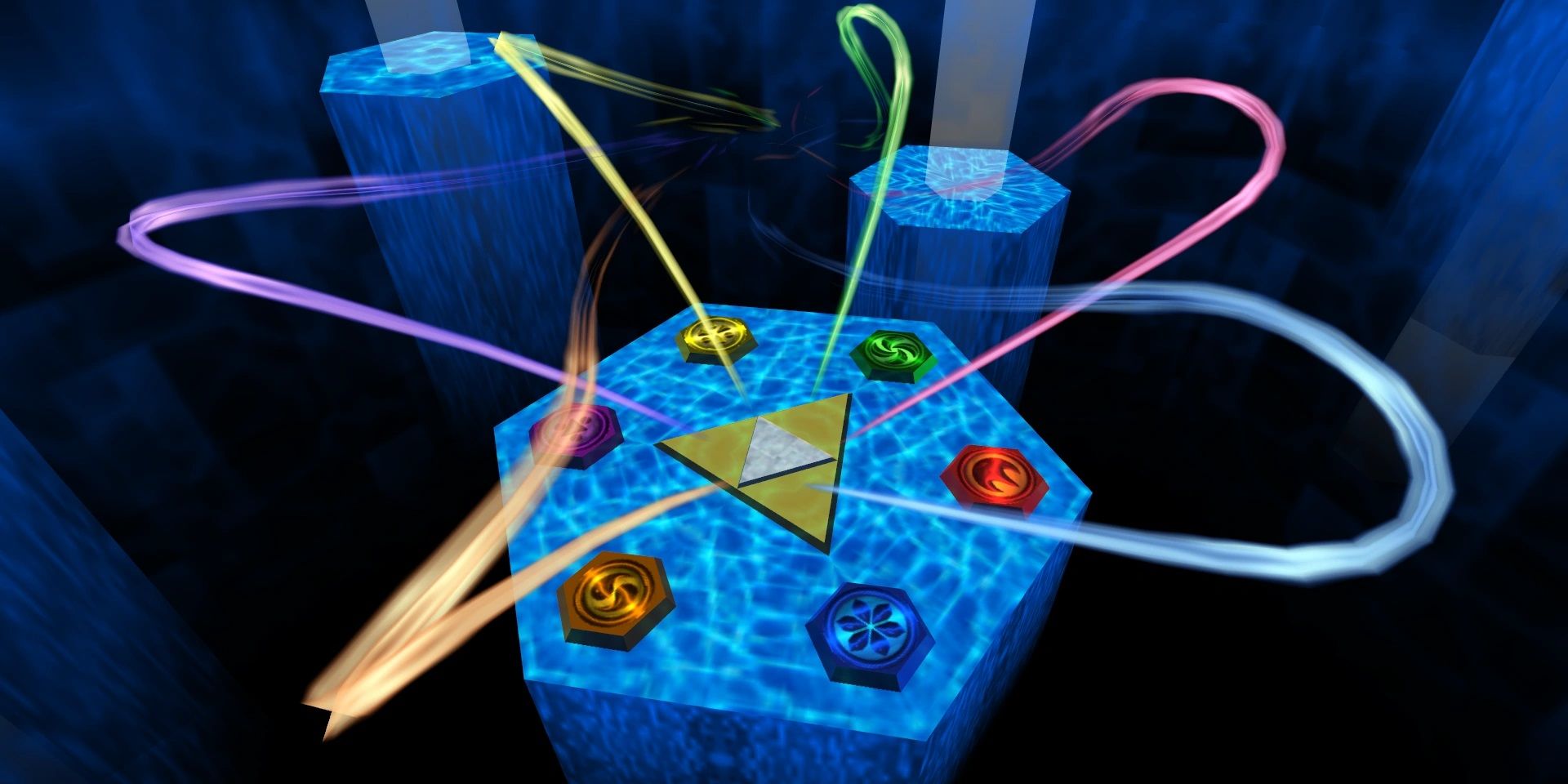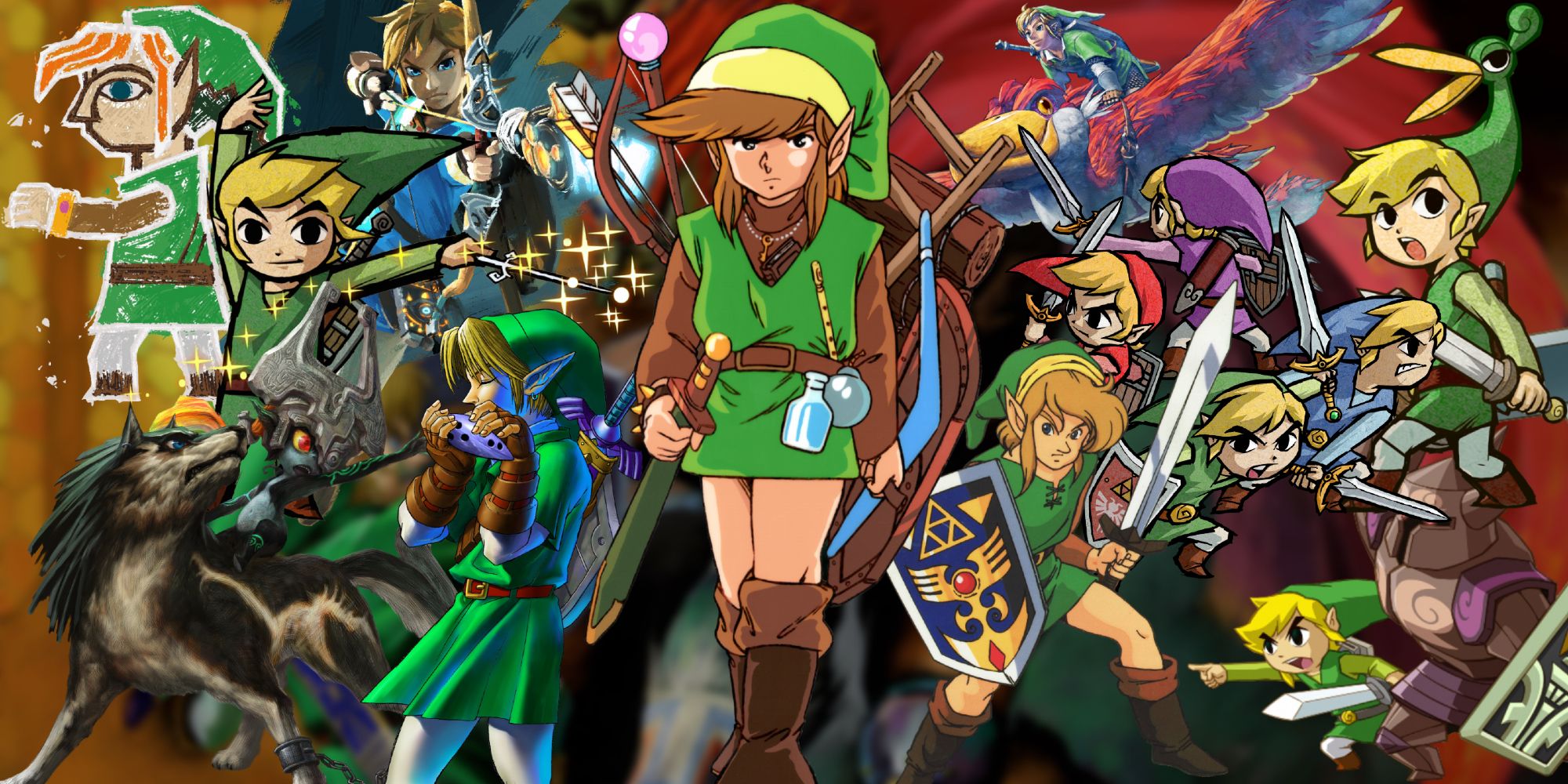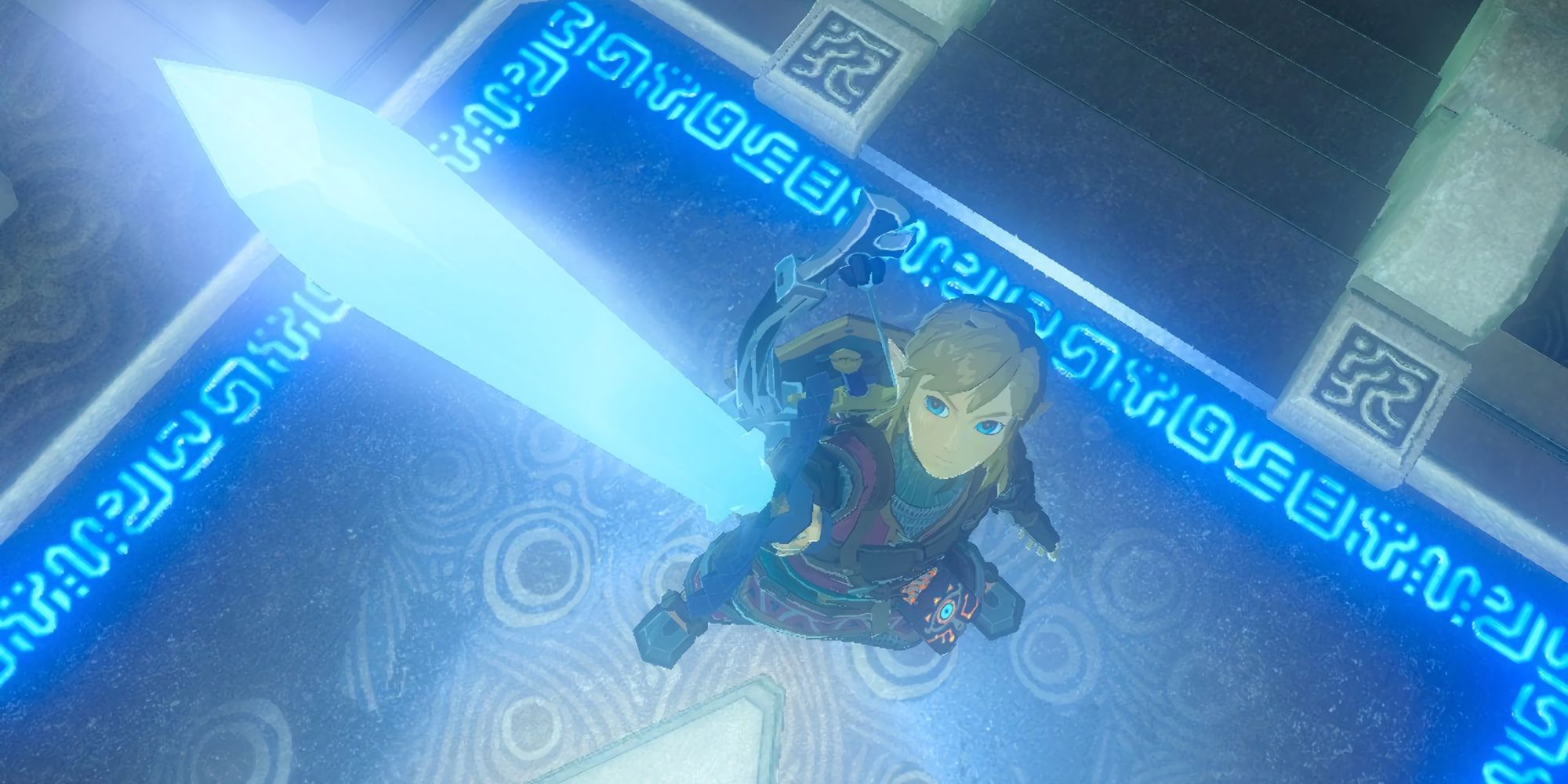2022 marks the 30th anniversary of the release of The Legend of Zelda: A Link to the Past. This game has been a longtime fan favorite and continues to be considered among the best games ever made. This incredible game has a simple but moving story, excellent gameplay, and a truly diverse cast of characters and locals.
In many ways, The Legend of Zelda: A Link to the Past marked a second beginning for Zelda as a whole. While this game very clearly is building upon the first game, it also marks the creation and birth of a number of mainstays that continue to guide the franchise today.
The Dark World Was Created
Throughout the series, Link has traveled to and from different worlds and different versions of the same world. Link - with his conspicuously appropriate name - often acts as a bridge between the light and dark worlds of Hyrule and the people throughout.
A Link to the Past (or LttP) contains the first introduction of an alternate world - though it is not the past, as the title implies. The title actually refers to the fact that this game is set before the first two games. A Link to the Past introduces the dark world - a mirror dimension that reflects the world Link comes from in strange and unexpected ways - which is a theme throughout the story.
Hearts Were First Broken
Pieces of heart are iconic items in Legend of Zelda since this game exactly. Neither of the first two Zelda games utilized a health system like this. The original Legend of Zelda only had full heart containers, and the second game opted for a more RPG-style leveling system.
The heart container and piece of heart system, which allowed for powerful health upgrades to be dealt out in smaller increments, has become a defining mechanic of the Legend of Zelda series. Part of the games' charm is the urge to search every nook and cranny of the world to find those valuable heart pieces that could make or break the next boss fight.
The Series' Love Of Puzzles Started
Now to be fair, The Legend of Zelda series has never had difficult puzzles - at least not until Breath of the Wild - but they quickly became a mainstay of the series after LttP. While simple things like hidden doors and pushable blocks were already common, Link to the Past introduced series pillars like the Hookshot, Pegasus Boots, and more.
These items provided Link with a number of unique methods to explore and delve through his world, inspiring players to re-examine everywhere they had been with a new method of interaction. Part of why this game continues to be played by speedrunners and new players alike is the ever-present puzzles to solve and discoveries to be made.
Link Found His Bottles
From Ocarina of Time to Skyward Sword, Link has made use of re-usable and ecologically friendly bottles to store everything from health potions to wild insects. The bottle has been such an important item to his character that one of the taunts he has in Super Smash Brothers is drinking Lonlon milk from a bottle.
These bottles first appear in Link to the Past, either discovered in the world or bought from a merchant. These four bottles provide Link with a number of important uses, ranging from healing to transporting quest items. Lastly, this is when the ever-important fairy-in-a-bottle first appeared, which provides Link with what essentially amounts to an extra life.
The Series' Love Of Eyeball Monsters Began
A very creepy and unsettling theme to come out of LttP is the Legend of Zelda's obsession with monsters that are essentially eyeballs. From the often recurring Ghoma to the ever-present Beamos, a truly remarkable number of enemies in the Zelda series boil down to eyeballs with legs, eyeballs with wings, or just floating eyeballs.
Link to the Past features quite a few bosses and enemies who follow this theme - a full quarter of the game's bosses (Argghus, Kholdstare, and Vitreous) are some variations on eyeballs. While none of these bosses are as terrifying as Ghoma, or as comedic as the hynox of Breath of the Wild, they mark the beginning of a love affair between the series and eyes.
Link Learned To Spin (Attack)
The first game of the series, Legend of Zelda, had very simple combat - Link's sword would simply jut out for attacks. the sequel, Link's Adventure, would see a slight improvement, allowing for some swinging of the sword. It was A Link to the Past that provided the foundation for Link's burgeoning swordplay to come into fruition.
The spin attack is the signature move of Link, providing him with both offensive power and defensive space creation. The spin attack added a layer of complexity to the simple combat system of the game - does the player spend the time to charge a spin for more damage? Or play it safe with standard attacks?
Ganondorf's Human Form Was Revealed
Ganon has been present from the very beginning of the series, but he was not always the imposing man of Ocarina of Time or Wind Waker. The first game only shows pig-Ganon, and he is essentially a beast. Link to the Past shows a piece of Ganon' - or Ganondorf, as he usually goes by in his human form - history.
Aghanim is the alter-ego of Ganon, which is revealed to the player at the end of the game. This dramatic reveal is a great usage of the villainous Ganon, who has shown to have powerful magic. This has also set up the series' frequent use of shape-changing and alter egos, including Link and Zelda's occasional alternate forms.
The Sages Were Introduced
This is not an aspect of the game that consistently reappears, but the concept of sages has been very important in the games they appear in. The six sages are wise people, sometimes magical, who serve as protectors and servitors to... something. Sometimes the sacred realm of Hylia, sometimes to the Master Sword itself.
The sages often have a number of different purposes depending on the game they appear in, but they have been appearing here and there ever since A Link to the Past. Many of these sages have become recurring characters throughout multiple Zelda games. These characters not only provide a new story element for the games to play with, but they also became a critical aspect of the games' structure.
It Established An Iconic Gameplay Structure
The gameplay structure of The Legend of Zelda games has been deeply important to the experience itself, almost telling players how to play the game while they play. In Link to the Past, this structure is simple - Link is first tasked with finding the three Pendants of Virtue, but when he is too late to stop Ganon, he must adventure in the dark world to find the six sages.
This structure of exploring the world and then re-exploring it with new eyes has been the key to the series' success for decades - it has nearly become a cliche of the Zelda games - not only do players love to explore, but they also love to see the world all over again, recapturing that excitement and wonder.
The Game Introduced The Master Sword
A simple sword, little more than a few dozen pixels in its first appearance, has gone on to be one of the most iconic and recognizable items in all of gaming history. It is more than just a sword, it is a key for locking Ganon away, a tool for exploring the world, and a connection to something more.
A Link to the Past introduced the Master Sword as the only weapon powerful enough to defeat the evil Aghanim, a sacred weapon only wieldable by the Knights of Hyrule. The sword has not only been hugely important in the series, but it also provides players with that sense of grandness, of importance, and of earned maturity that is essential for the childhood fantasy that the Legend of Zelda encompasses so well.

